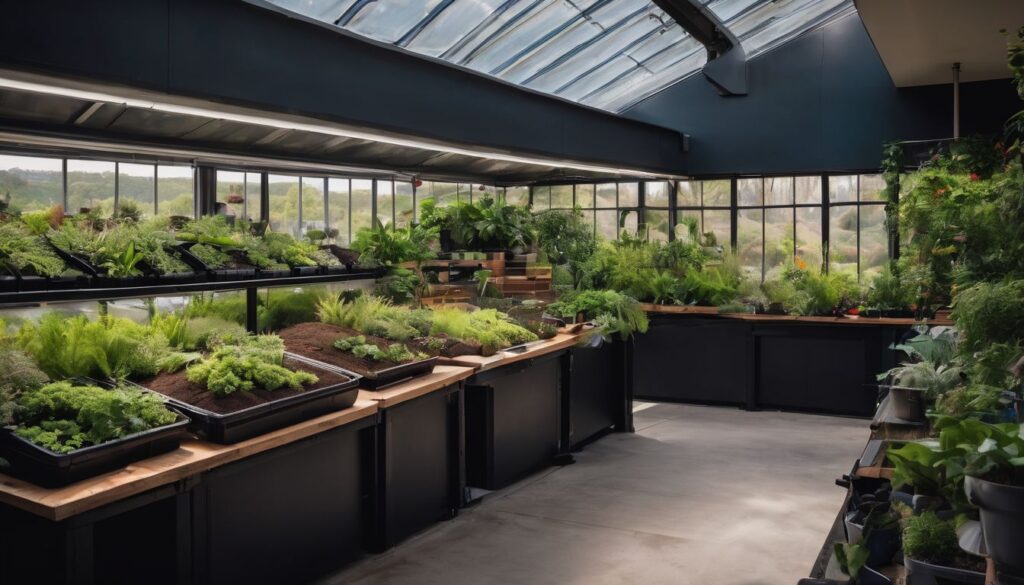Are you limited for outdoor space but keen on starting your own composting project? Indoor composting is a practical solution that’s gaining popularity with urban gardeners. This blog will help you demystify indoor composting methods, ranging from worm-bin to aerobic techniques.
Can Composting Be Done Indoors?
Yes, composting can be done indoors, making it a practical solution for urban gardeners with limited outdoor space. Indoor composting offers convenience, waste reduction, and nutricious compost for plants. Methods include aerobic composting, vermicomposting with worms, and Bokashi composting, and choosing the right indoor composting bin is crucial for success.
Keep reading and learn how to turn kitchen scraps into nutrient-rich soil right in your home!
Key Takeaways
- Indoor composting is a practical solution for urban gardeners with limited outdoor space.
- Benefits of indoor composting include convenience, waste reduction, and the creation of nutrient – rich compost for plants.
- Methods of indoor composting include aerobic composting, vermicomposting with worms, and Bokashi composting.
- When choosing an indoor composting bin, consider size, ventilation, and ease of maintenance.
Benefits of Indoor Composting
 Indoor composting offers convenience, reduces waste, and creates nutrient-rich compost.
Indoor composting offers convenience, reduces waste, and creates nutrient-rich compost.
Convenience
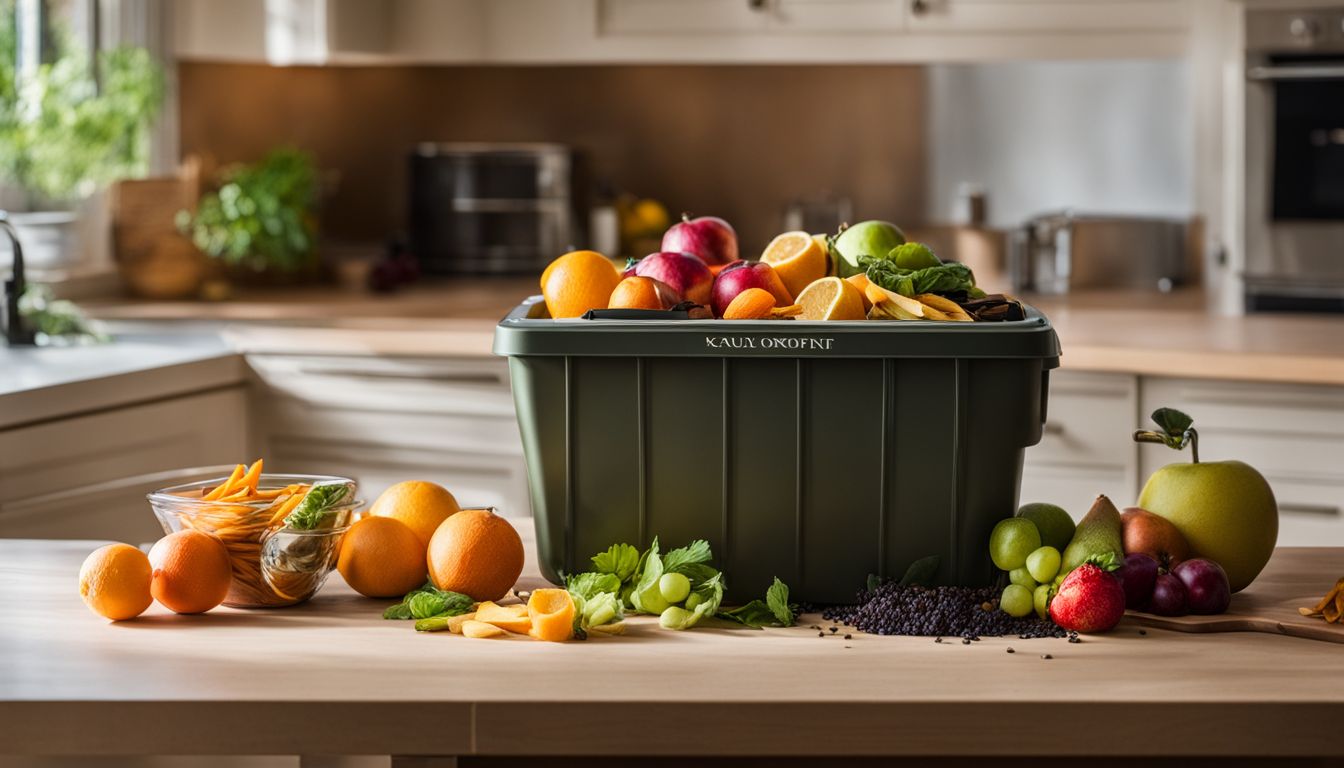
Composting at home can be easy and handy. With indoor composting, you don’t need to go outside to get rid of kitchen scraps. No more lugging bags of waste! Indoor bins are small and fit nicely in the kitchen or garage.
You also have year-round access to your compost pile even if it’s cold or rainy outside.
Reduction of waste
Indoor composting is a great way to reduce waste. Instead of throwing organic waste like fruit peels and coffee grounds into the trash, you can turn them into nutrient-rich compost for your plants.
By composting indoors, you are diverting waste from the landfill and helping to reduce greenhouse gas emissions. It’s a simple yet effective way to make a positive impact on the environment.
Plus, when you use the compost in your garden or potted plants, it helps nourish the soil and promotes healthy plant growth. So not only are you reducing waste, but also creating something beneficial for nature.
Creation of nutrient-rich compost

Creating nutrient-rich compost is one of the main benefits of indoor composting. When organic waste such as kitchen scraps, yard trimmings, and coffee grounds decompose indoors, they break down into a dark and crumbly material rich in nutrients.
This nutrient-rich compost can then be used to enhance the soil in potted plants, outdoor gardens, or as a top dressing for plants. It helps improve soil structure, water retention, and overall plant health.
Indoor composting allows you to reduce waste while producing a valuable resource for your plants.
Methods of Indoor Composting
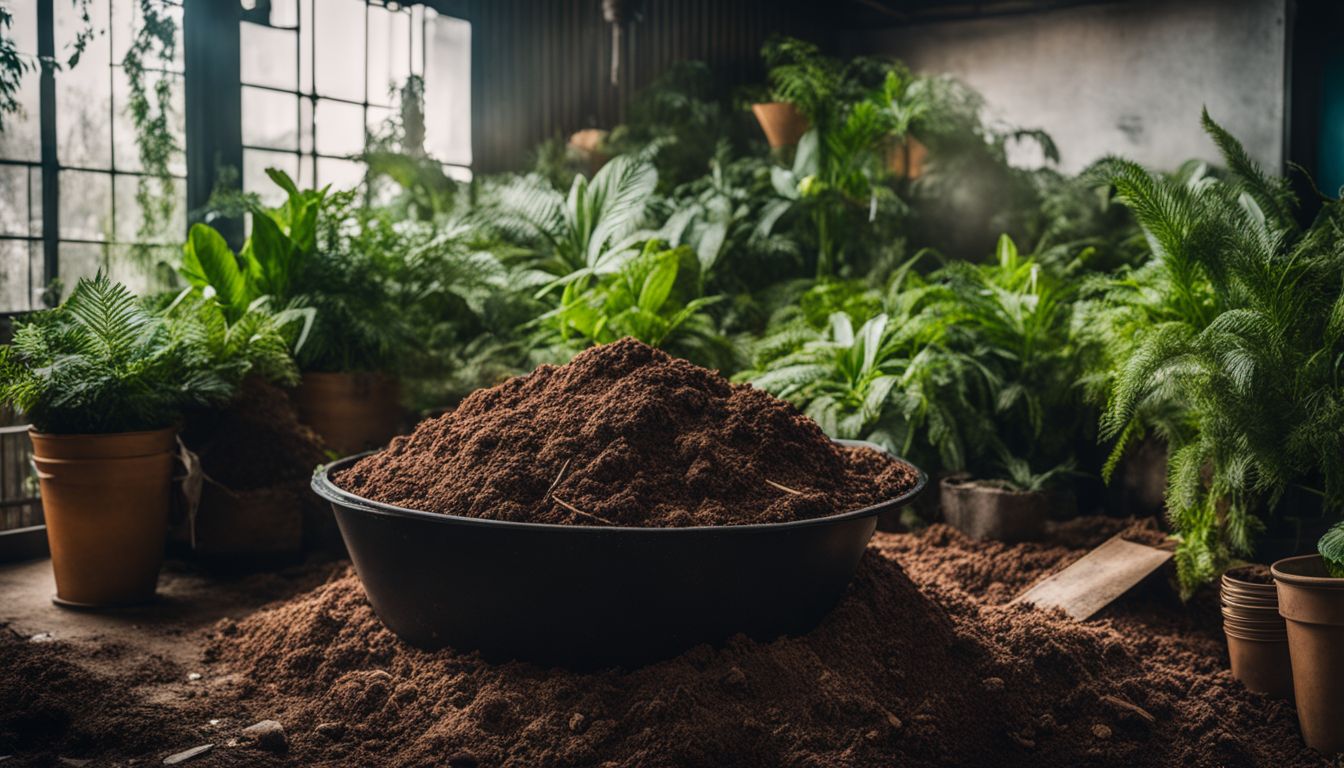
Three common methods of indoor composting include aerobic composting, vermicomposting with worms, and Bokashi composting.
Aerobic composting
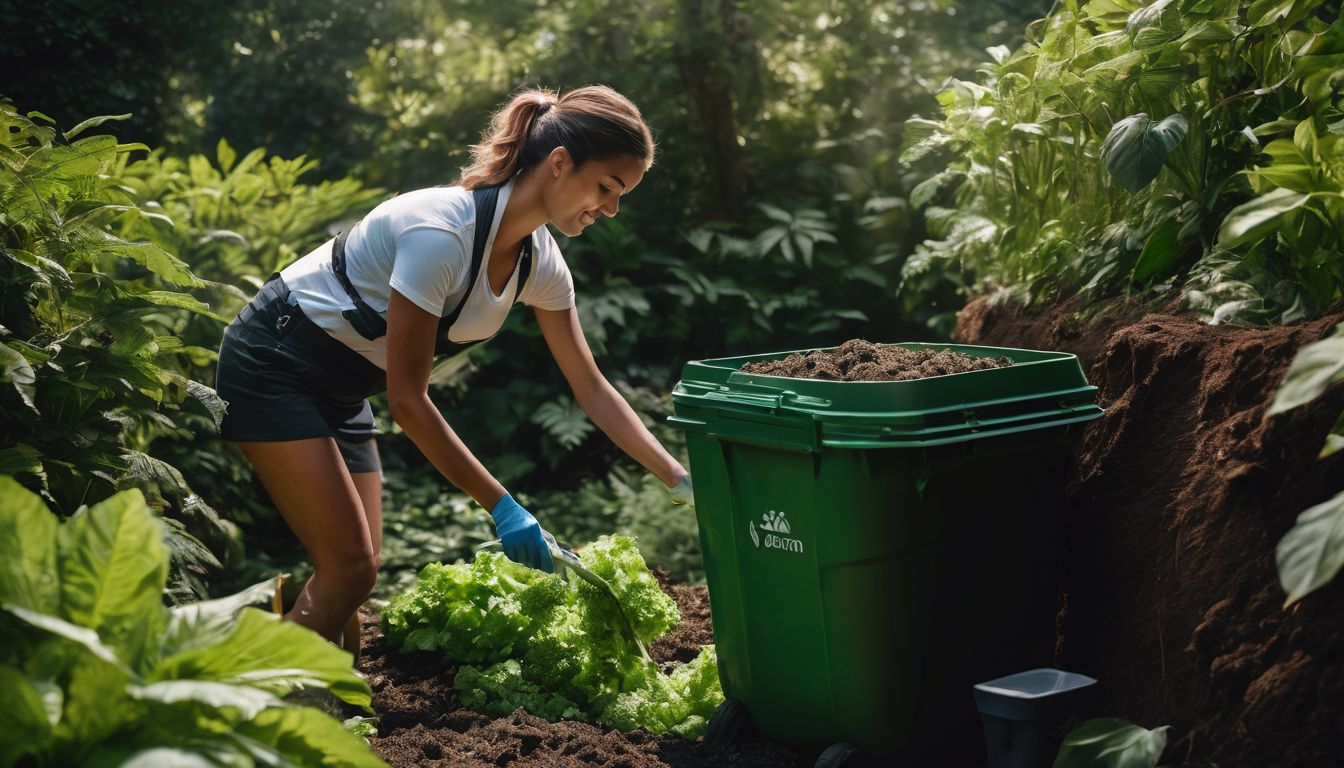
Aerobic composting is a method of indoor composting that involves adding oxygen to the organic waste. This process promotes the growth of bacteria and other microorganisms that break down the material into nutrient-rich compost.
With aerobic composting, you can use a specially designed bin or container with ventilation to ensure proper airflow. This method is efficient and helps speed up the decomposition process, resulting in high-quality compost for your plants or gardens.
Plus, it reduces odors and keeps pests away. So, if you’re looking for a quick and effective way to compost indoors, aerobic composting is definitely worth considering!
Vermicomposting with worms
Vermicomposting is a method of indoor composting that uses worms to break down organic waste. It is a simple and efficient way to turn kitchen scraps into nutrient-rich compost. To start vermicomposting, you will need a worm bin, which can be easily made using a container with small holes for ventilation.
Place bedding material like shredded newspaper or coconut coir in the bin, then add redworms, also known as red wigglers or Eisenia fetida. Redworms are great at breaking down organic matter quickly.
Feed them vegetable scraps, fruit peels, coffee grounds, and other food waste. The worms will eat the food and their castings (or poop) will turn into excellent fertilizer for your plants.
Bokashi composting
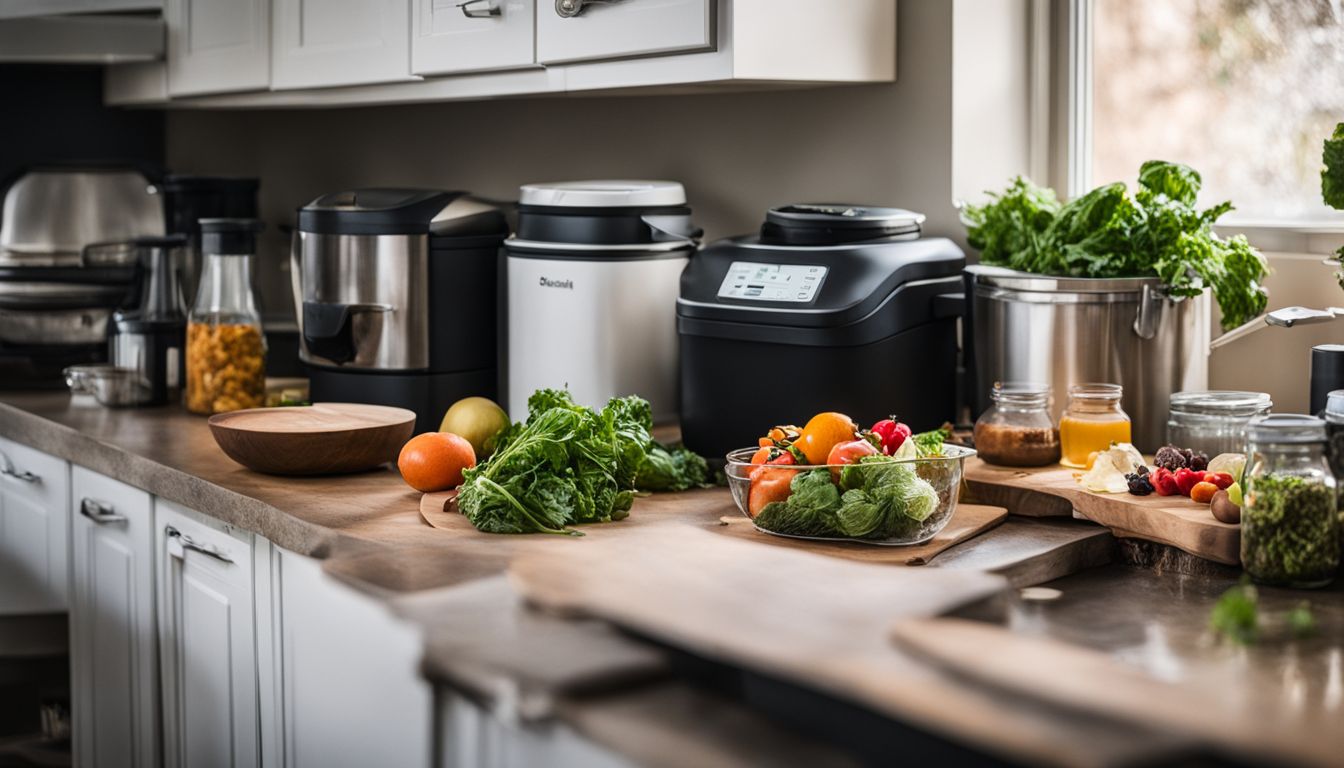 Bokashi composting is a method of indoor composting that uses fermented microorganisms to break down food waste. It is an anaerobic process, meaning it doesn’t require oxygen. By adding bokashi bran, which contains beneficial microbes, to airtight containers along with kitchen scraps, the waste undergoes fermentation rather than decomposition.
Bokashi composting is a method of indoor composting that uses fermented microorganisms to break down food waste. It is an anaerobic process, meaning it doesn’t require oxygen. By adding bokashi bran, which contains beneficial microbes, to airtight containers along with kitchen scraps, the waste undergoes fermentation rather than decomposition.
This process allows you to compost meat, dairy, and other traditionally difficult-to-compost materials in your home. After fermenting for several weeks, the Bokashi material can be buried in soil or added to an outdoor composter to complete the decomposition process.
Bokashi composting is odorless when done correctly and offers a convenient way to reduce waste and create nutrient-rich fertilizer indoors all year round.
Choosing the Right Composting Bin
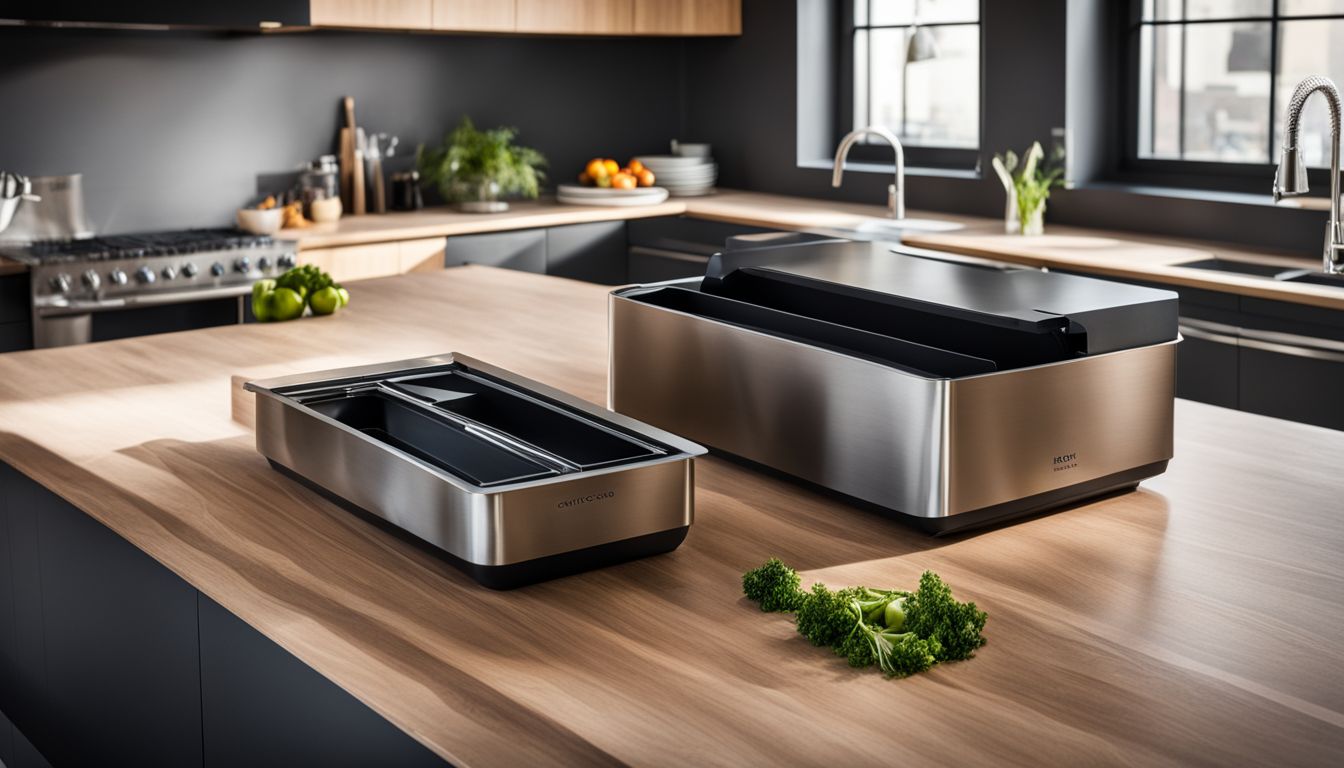
Consider the size, ventilation, and ease of maintenance when selecting an indoor composting bin. Read on to find out which bin suits your needs best.
Size and capacity
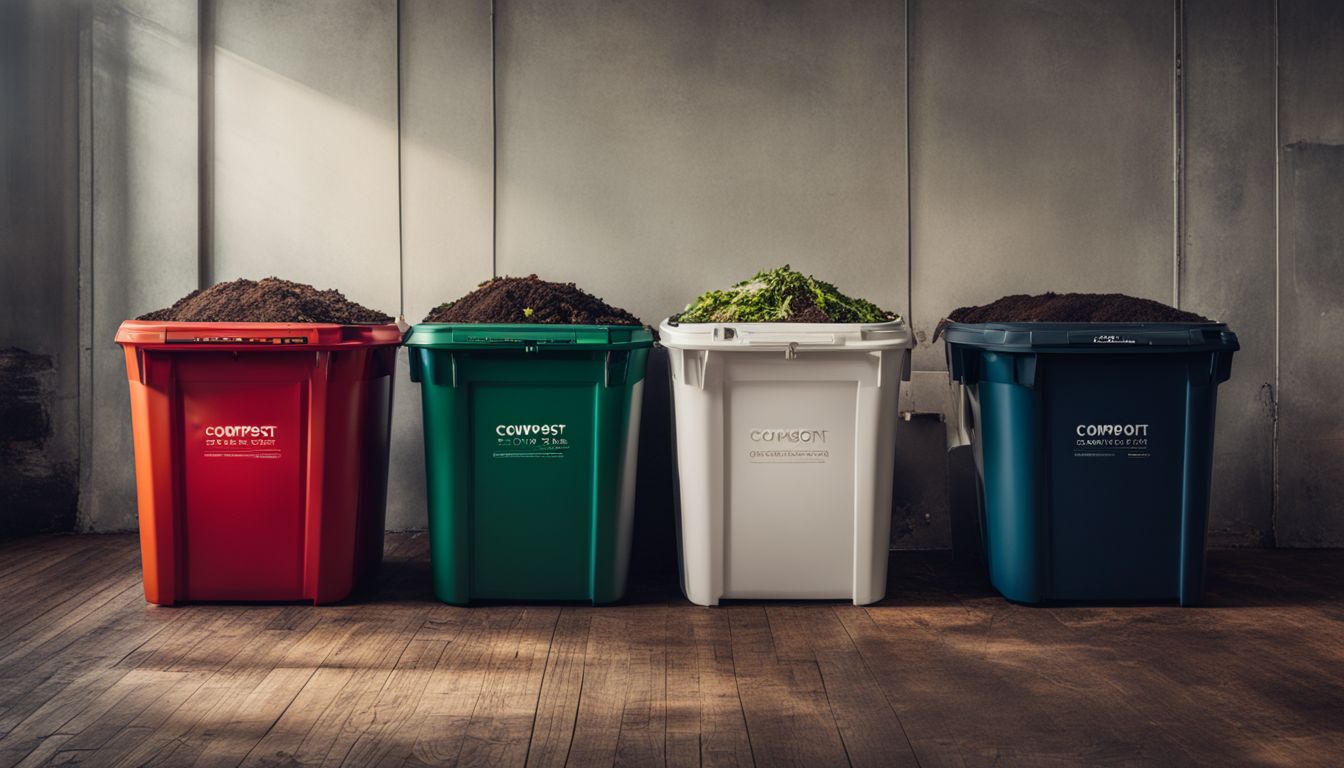
When it comes to choosing the right composting bin for indoor use, size and capacity are important factors to consider. You’ll want to select a bin that fits comfortably in your space and can hold an adequate amount of organic waste.
The size will depend on how much waste you generate and the available space in your home. It’s important not to choose a bin that is too small, as it may not be able to accommodate all of your kitchen scraps.
On the other hand, a bin that is too large may take up unnecessary space. Consider the capacity of the bin and ensure it can handle your composting needs without overcrowding or overwhelming the system.
Ventilation and odor control
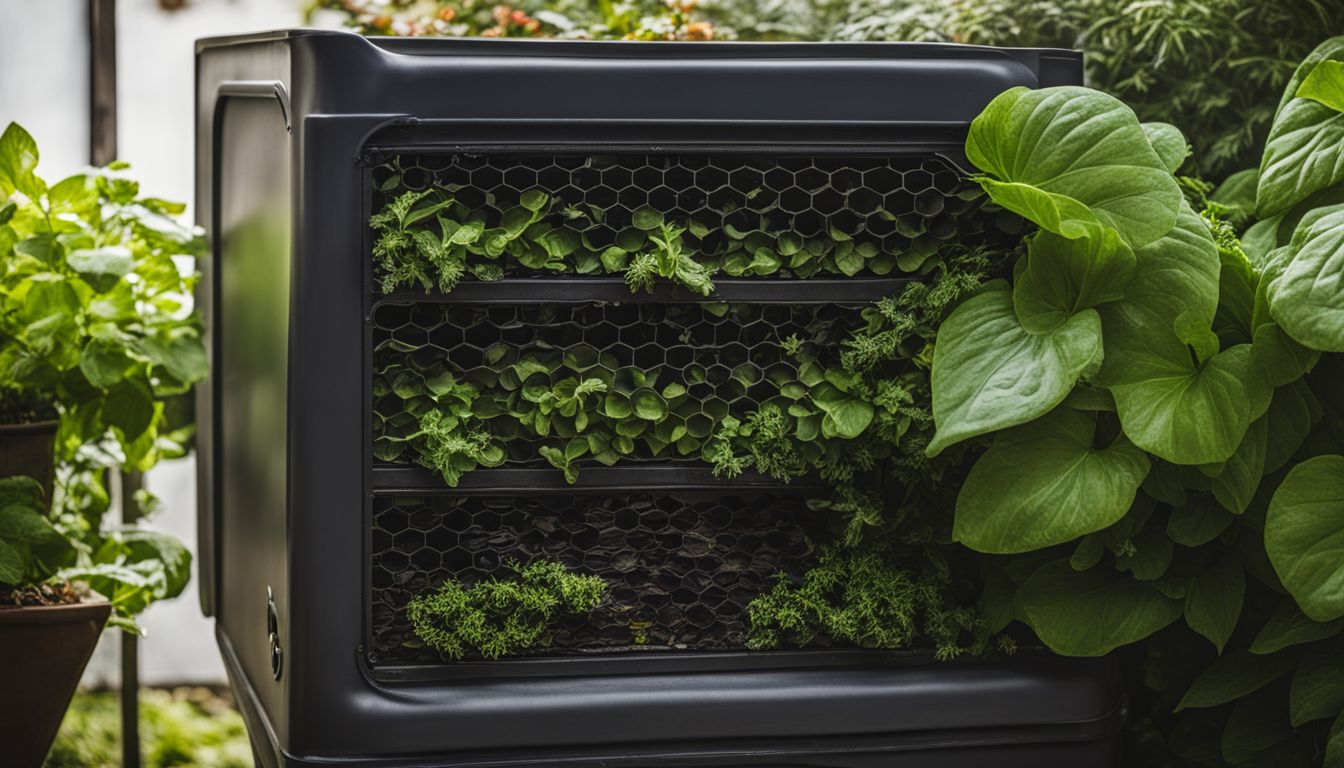 Proper ventilation is important for indoor composting to prevent the buildup of unpleasant odors. A well-ventilated compost bin allows air to circulate, promoting aerobic decomposition and reducing the likelihood of anaerobic conditions that can cause foul smells.
Proper ventilation is important for indoor composting to prevent the buildup of unpleasant odors. A well-ventilated compost bin allows air to circulate, promoting aerobic decomposition and reducing the likelihood of anaerobic conditions that can cause foul smells.
It’s a good idea to choose a compost bin with ventilation holes or slots to ensure adequate airflow. Additionally, regularly turning and mixing the compost helps aerate it and minimize any potential odor issues.
Remember, with proper ventilation and maintenance, indoor composting can be done without creating any unpleasant smells.
Ease of maintenance

Maintaining an indoor composting system is easy and hassle-free. With the right setup, you can keep your compost bin clean and odorless without much effort. Regularly adding kitchen scraps, turning or mixing the compost, and keeping the moisture levels balanced are some simple tasks to ensure successful indoor composting.
Additionally, choosing a composting container with good ventilation and odor control features makes maintenance even easier. By following these steps and using the appropriate equipment, you can enjoy the benefits of indoor composting with minimal maintenance required.
Tips for Successful Indoor Composting
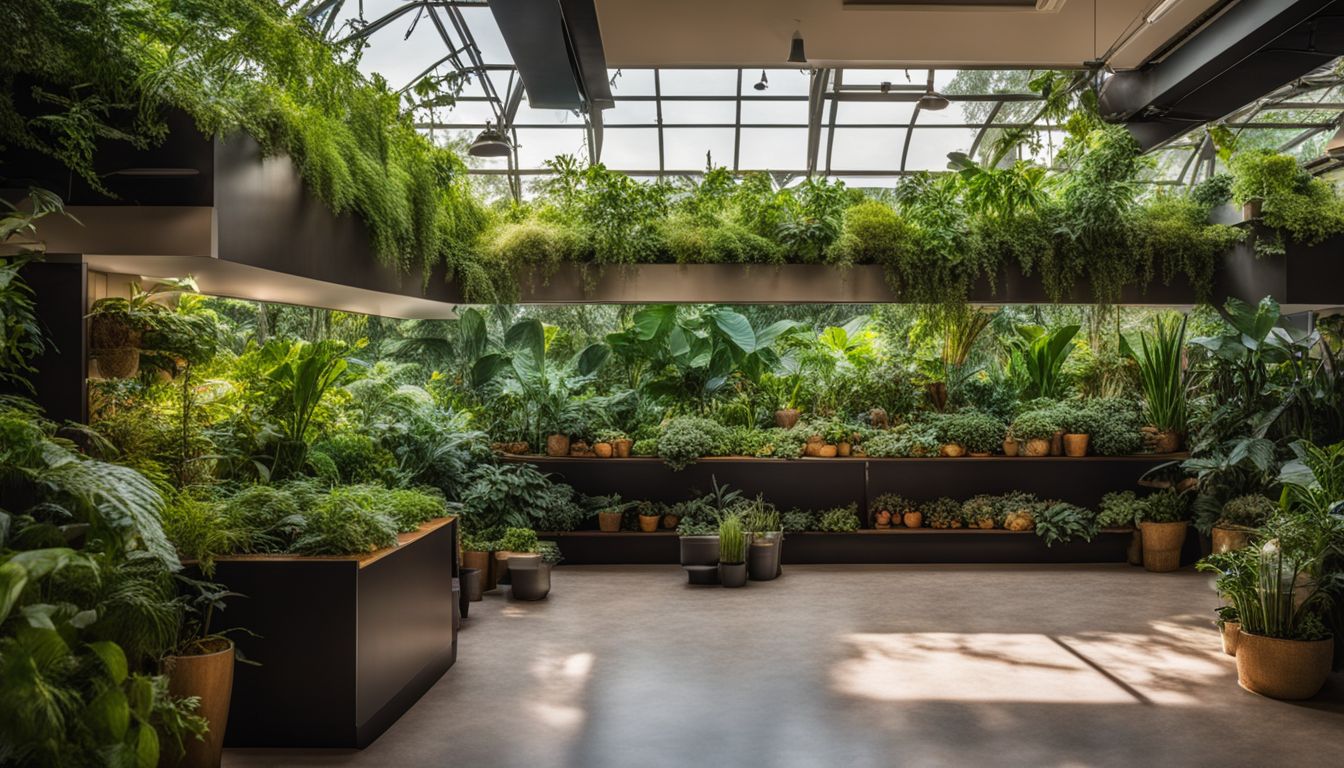
Maintain a proper balance of carbon and nitrogen ratios, monitor moisture levels regularly, turn and mix the compost periodically, and effectively manage any potential odors.
Balancing carbon and nitrogen ratios
To successfully compost indoors, it’s important to balance the carbon and nitrogen ratios in your compost. Carbon-rich materials include dried leaves, shredded paper, and cardboard, while nitrogen-rich materials include fresh fruit and vegetable scraps.
A good balance of both is necessary for efficient decomposition and odor control. Aim for a ratio of about 30 parts carbon to 1 part nitrogen. This will ensure that the microorganisms responsible for breaking down the organic matter have enough food to thrive.
Monitoring and adjusting these ratios will help you achieve high-quality compost for your indoor gardening needs.
Proper moisture levels

Maintaining proper moisture levels is essential for successful indoor composting. The compost pile needs to be moist, but not too wet or dry. Too much moisture can lead to a smelly and slimy compost, while too little moisture can slow down the decomposition process.
To ensure proper moisture levels, it’s important to monitor the compost regularly and adjust as needed. A good rule of thumb is that the compost should feel like a damp sponge when squeezed in your hand.
If it feels too dry, add some water; if it feels too wet, mix in some dry carbon-rich materials like shredded paper or leaves. By maintaining the right moisture balance, you’ll create an optimal environment for microorganisms to break down organic matter into nutrient-rich compost.
Turning and mixing the compost
Turning and mixing the compost is an essential step in indoor composting. It helps to aerate the pile, allowing oxygen to circulate and promoting decomposition. By turning the compost regularly, you can prevent it from becoming compacted and smelly.
Mixing the materials also helps to distribute moisture evenly, ensuring that everything decomposes properly. Remember to use a pitchfork or shovel to turn the compost gently, avoiding any damage to helpful organisms like worms.
Regularly turning and mixing your indoor compost will speed up the process of breaking down organic waste into nutrient-rich soil for your plants.
Managing odor
To ensure your indoor composting doesn’t produce any unpleasant odors, there are a few things you can do. First, make sure to balance the carbon and nitrogen ratios in your compost by adding equal amounts of “greens” (like kitchen scraps) and “browns” (such as dry leaves or shredded newspaper).
This will help prevent any strong smells. Secondly, keep the moisture levels in check – your compost should be damp but not soggy. Regularly turning and mixing the compost will also help aerate it and reduce odor.
Finally, consider using an indoor compost bin with proper ventilation to allow for air circulation. By following these tips, you can successfully manage odor while composting indoors.
Using Indoor Compost
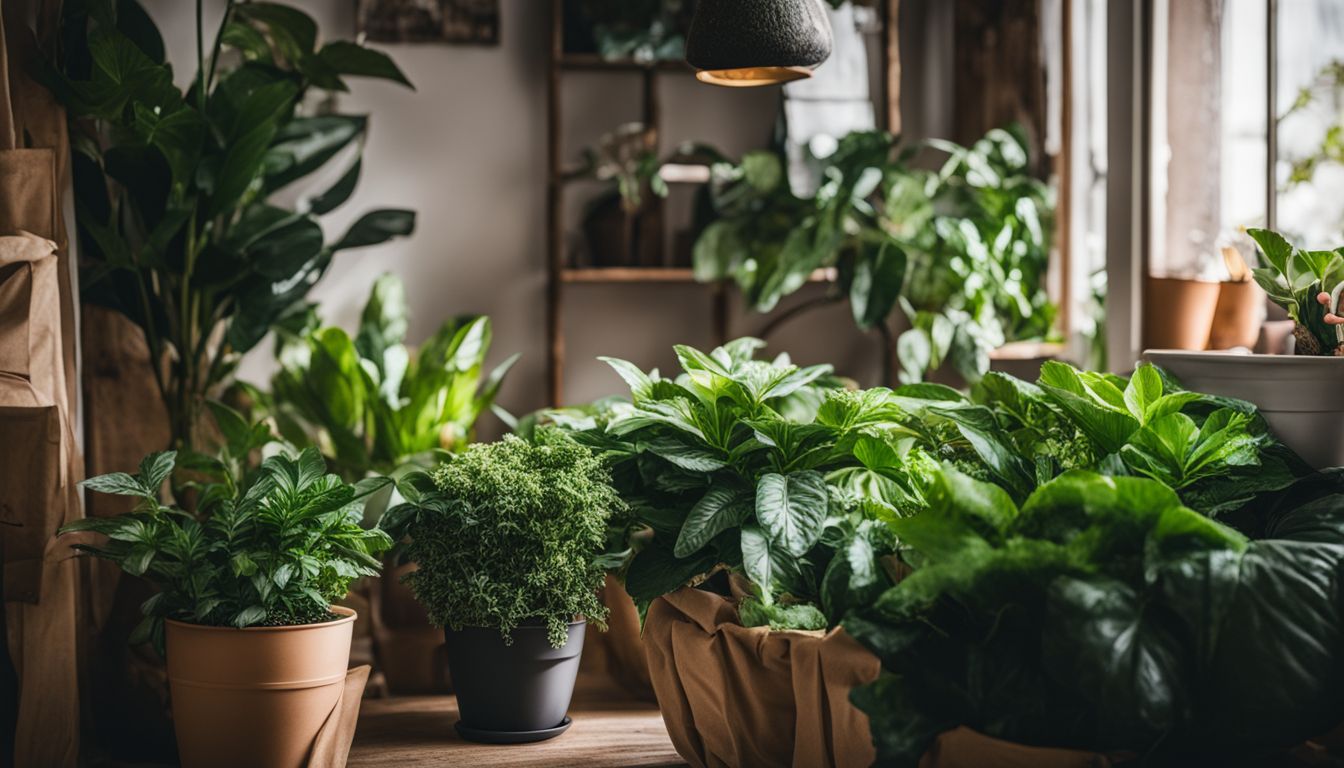
There are many ways to utilize the nutrient-rich indoor compost, from incorporating it into potted plants and gardens to creating homemade potting soil mixes. Discover how indoor compost can enhance your gardening efforts and promote a more sustainable lifestyle.
Incorporating compost into potted plants
To incorporate compost into potted plants, simply mix it into the potting soil before planting. Compost adds essential nutrients to the soil, promoting healthier plant growth. It improves soil structure and water retention, reducing the need for frequent watering.
The organic matter in compost also helps suppress diseases and pests, creating a more favorable environment for your plants. By using compost in your potted plants, you are providing them with the nourishment they need to thrive and grow beautifully.
(Source: FACTS 10)
Top dressing for outdoor gardens
Indoor compost can also be used as a top dressing for outdoor gardens. Simply sprinkle a thin layer of compost onto the surface of the soil around your plants. This will help improve the soil structure, retain moisture, and provide nutrients to your garden.
The organic matter in the compost acts as a slow-release fertilizer, feeding your plants over time. Plus, it helps suppress weeds and prevents erosion. Top dressing with indoor compost is an easy and effective way to give your outdoor garden a natural boost without relying on chemical fertilizers.
Mulching for moisture retention
Mulching is an important step in indoor composting because it helps to retain moisture in the compost pile. When you cover the top layer of your compost with a layer of organic materials like straw, leaves, or wood chips, it creates a barrier that prevents evaporation and keeps moisture locked in.
This is especially important in indoor environments where there may not be much airflow to naturally evaporate excess moisture. By mulching your indoor compost pile, you can ensure that the right amount of moisture is retained for optimal decomposition without drying out or becoming too wet.
Homemade potting soil mix
Creating your own homemade potting soil mix is a cost-effective and environmentally friendly way to provide the necessary nutrients for your potted plants. By combining organic matter such as compost, peat moss, and vermiculite or perlite, you can customize the mix based on your plants’ needs.
Homemade potting soil mixes are free from harmful chemicals found in some commercial mixes and can support better plant growth. Plus, incorporating compost from indoor composting adds valuable nutrients to the mix, making it even more beneficial for your plants’ health.
With just a few simple ingredients and a little bit of effort, you can create a high-quality potting soil mix that will help your potted plants thrive.
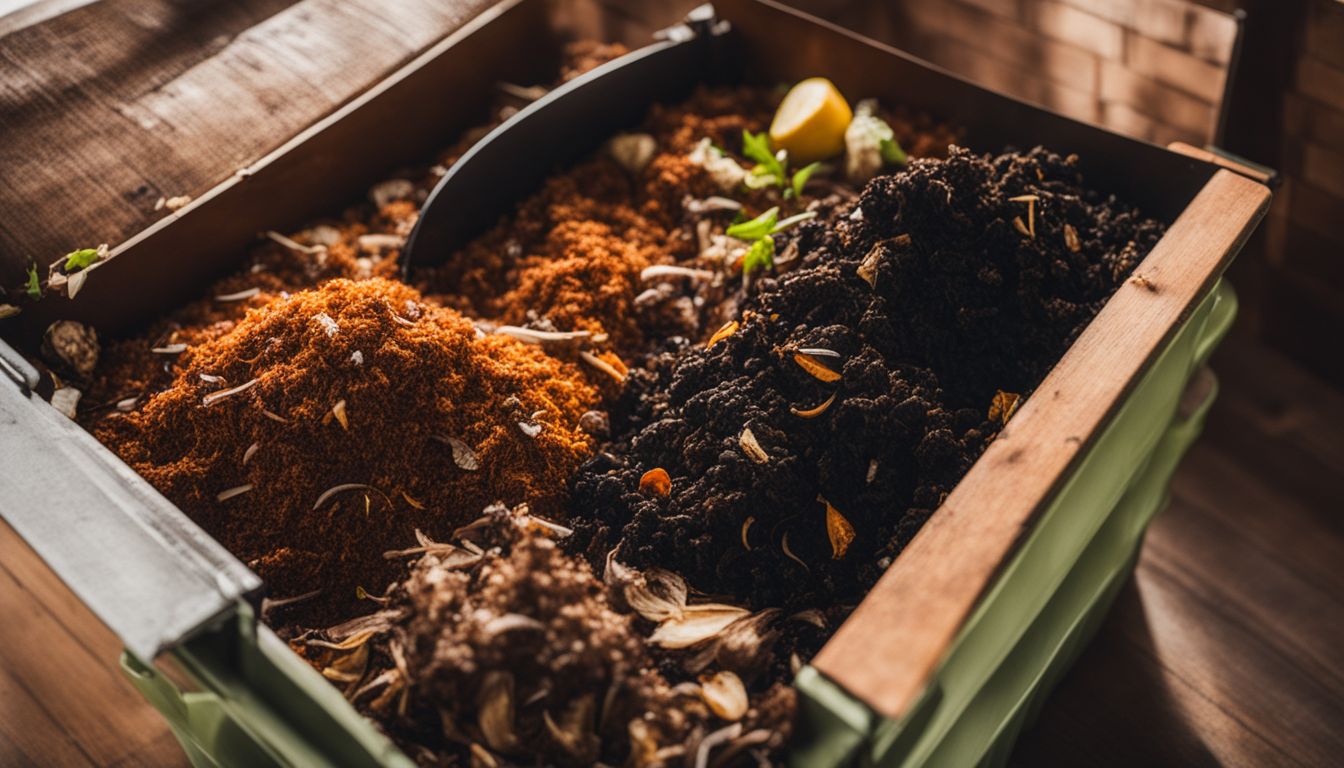
Indoor composting is a great way to reduce waste and create nutrient-rich soil, even if you don’t have a backyard or outdoor space. One of the benefits of indoor composting is that it can be done year-round, regardless of the weather outside.
You can choose from different methods like aerobic composting with worms or using an indoor bin. These methods are beginner-friendly and don’t require much space or expensive materials.
If you’re worried about odors, don’t worry! Indoor composting can be done without any unpleasant smells if you manage it correctly.
To start indoor composting, you’ll need to choose the right method for your needs. Worm composting, also known as vermicomposting, involves using redworms to break down organic waste into nutrient-rich castings.
This method is suitable for smaller spaces and doesn’t produce strong odors when properly maintained. Another option is using an aerobic compost bin where microorganisms break down the organic matter in the presence of oxygen.
This method requires turning and mixing the compost regularly but produces faster results.
When choosing a compost bin for indoors, consider its size and capacity to ensure it fits your available space and meets your needs in terms of waste volume. Look for bins with ventilation systems or odor control features to prevent any unwanted smells from escaping into your home.
Choosing a bin that’s easy to maintain will make your indoor composting experience hassle-free.
Once you have successfully created your indoor compost, there are many ways you can use it! Incorporate it into potted plants as a natural fertilizer or use it as top dressing on outdoor gardens for added nutrients and moisture retention.
You can also mix homemade potting soil by combining aged indoor compost with other ingredients like perlite or coconut coir.
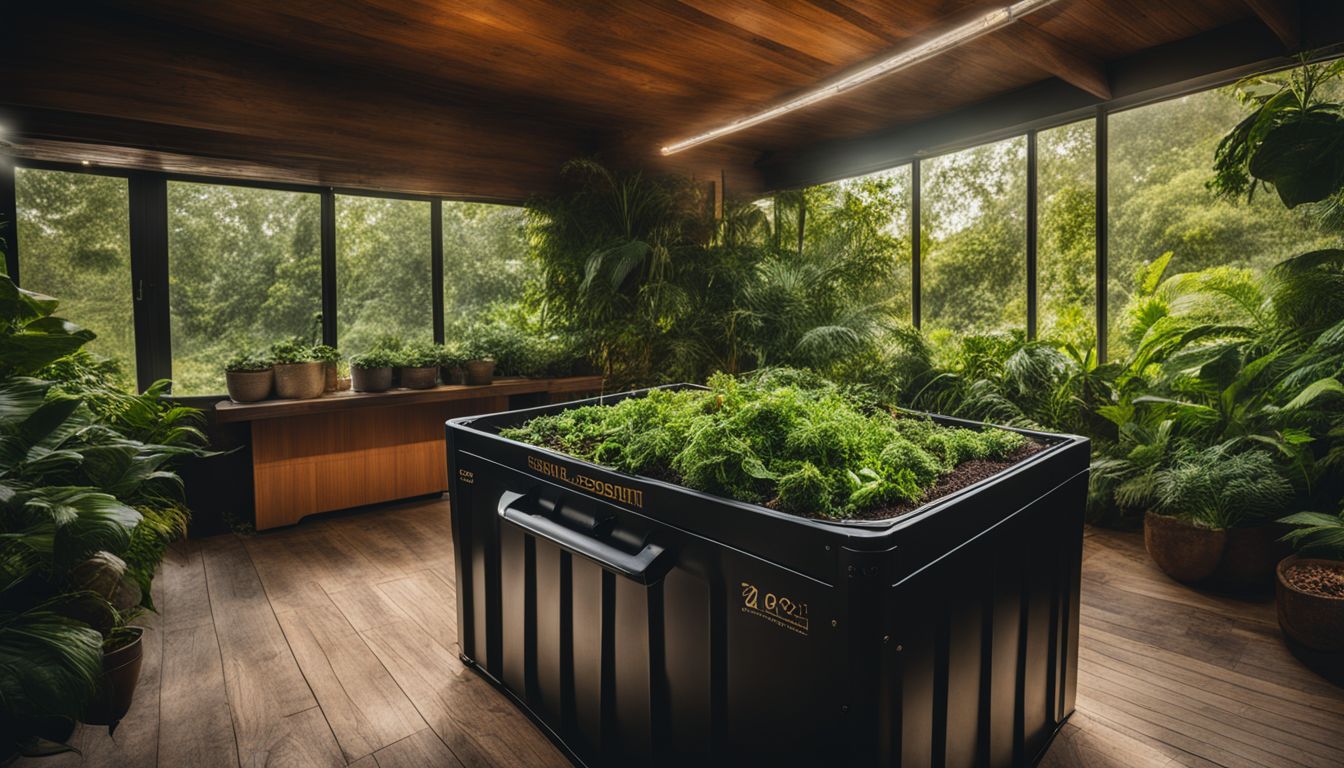
The outlines for “Can Composting Be Done Indoors” needed more details to be complete. Indoor composting has many benefits, like being convenient and reducing waste. There are different methods you can use, such as aerobic composting with worms or using a Bokashi system.
You also need to choose the right composting bin based on size, ventilation, and ease of maintenance. To succeed at indoor composting, you must balance carbon and nitrogen ratios, maintain proper moisture levels, and manage odor.
Finally, you can use your indoor compost in various ways like adding it to potted plants or using it as mulch for outdoor gardens.
Conclusion
In conclusion, composting can definitely be done indoors. It offers several benefits like convenience, waste reduction, and the creation of nutrient-rich compost. There are different methods to choose from, such as aerobic composting with or without worms, as well as the Bokashi method.
With the right composting bin and some helpful tips for success, anyone can enjoy indoor composting year-round. So go ahead and give it a try – your plants and the environment will thank you!
FAQs
1. Can composting be done indoors?
Yes, you can do composting indoors with the help of small composting containers or a DIY indoor compost bin.
2. What is worm bin composting?
Worm bin composting, also known as redworm composting, involves using worms to break down kitchen scraps into rich soil. It’s great for indoor recycling and sustainable living.
3. How does an indoor aerobic compost process work?
In an indoor aerobic compost process, organic waste breaks down in the presence of air inside a special machine or vessel called a composter.
4. Are there any tips for odorless indoor composting?
Yes! Make sure you mix dry materials like paper and leaves with wet kitchen scraps in your composter to keep it from smelling bad.
5.What are some benefits I can get from adding my kitchen scraps to the compost bucket?
Adding kitchen scraps like vegetable peels to your indoor composing buckets aids waste reduction while promoting ecofriendly practices through urban agriculture.

As a dedicated mother and passionate software developer, she weaves her diverse experiences into captivating stories that inspire and engage readers. Emma's love for sustainable living and environmental consciousness permeates both her personal and professional life. When she's not immersed in the world of coding and software development, Emma can be found nurturing her family and tending to her thriving organic garden. Her commitment to sustainable practices extends to every aspect of her life, from repurposing household items to embracing eco-friendly technologies.

